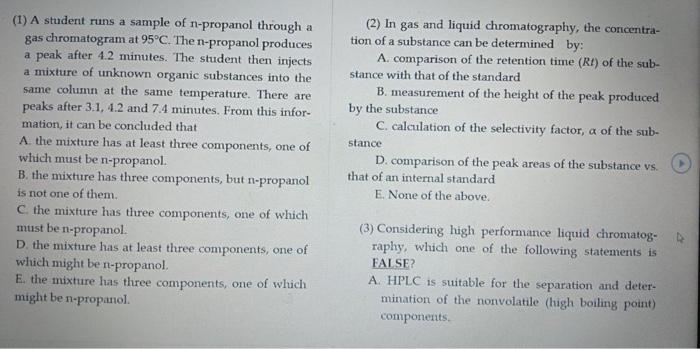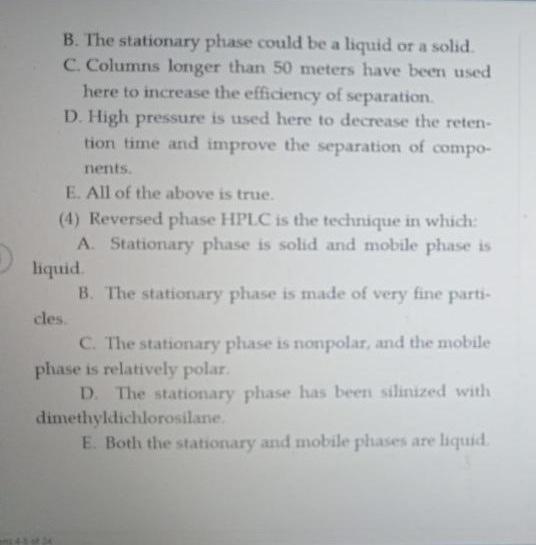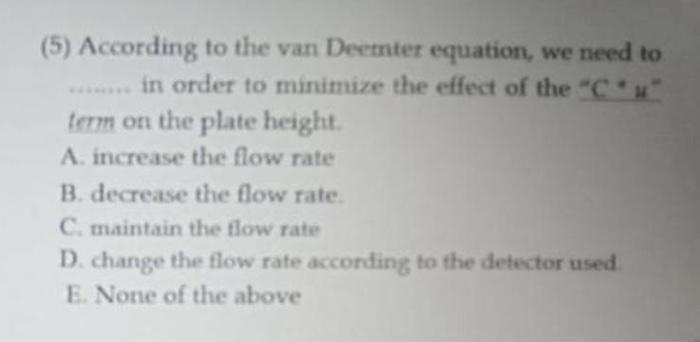(1) A student runs a sample of n-propanol through a (2) In gas and liquid chromatography, the concentragas chromatogram at 95C. The n-propanol produces tion of a substance can be determined by: a peak after 4.2 minutes. The student then injects A. comparison of the retention time (Rt) of the suba mixture of unknown organic substances into the stance with that of the standard same column at the same temperature. There are B. measurement of the height of the peak produced peaks after 3.1,4.2 and 7.4 minutes. From this inforby the substance mation, it can be concluded that C. calculation of the selectivity factor, of the subA. the mixture has at least three components, one of stance which must be n-propanol. B. the mixture has three components, but n-propanol that of an internal standard is not one of them. E. None of the above. C. the mixture has three components, one of which must be n-propanol. (3) Considering high performance liquid chromatogD. the mixture has at least three components, one of raphy, which one of the following statements is which might be n-propanol. FAISE? E. the mixture has three components, one of which A. HPLC is suitable for the separation and determight be n-propanol. mination of the nonvolatile (hugh boiling point) componesits. B. The stationary phase could be a liquid or a solid C. Columns longer than 50 meters have been used here to increase the efficiency of separation. D. High pressure is used here to decrease the retention time and improve the separation of components. E. All of the above is true. (4) Reversed phase HPL.C is the techrique in which: A. Stationary phase is solid and mobile phase is liquid. B. The stationary phase is made of very fine particles. C. The stationary phase is nonpolar, and the mobile phase is relatively polar. D. The stationary phase has been silinized with dimethyldichlorosilare. E. Both the stationary and mobile phases are hiquid. (5) According to the van Deemter equation, we need to in order to minimize the effect of the " C * u" term on the plate height. A. increase the flow rate B. decrease the flow rate. C. maintain the flow rate D. change the flow rate acconding to the detector used. E. None of the above









